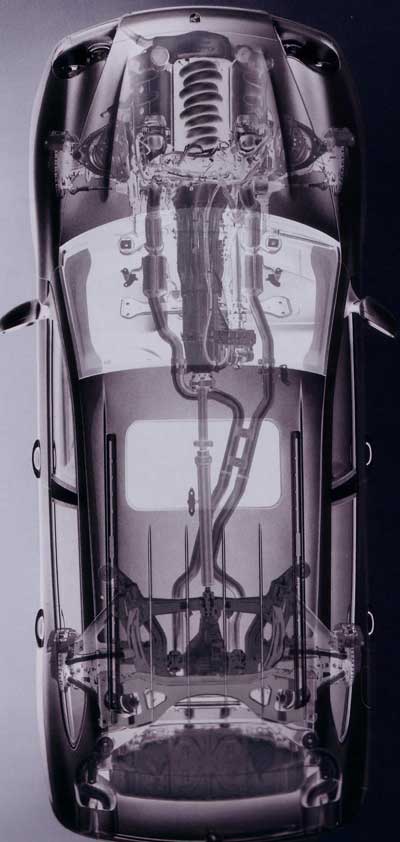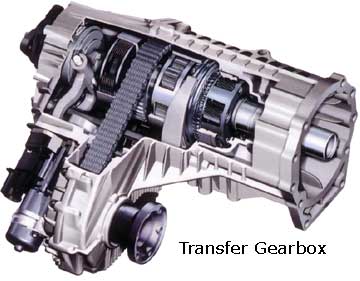 |
The Cayenne is equipped with one of the most advanced driver aids ever featured on a standard production vehicle: Porsche Traction Management System (PTM). While incredibly sophisticated, the fundamental concept of PTM is extremely simple. Basically, the system actively distributes the engine's torque to the wheels that can use it most efficiently.
The heart of the Porsche Traction Management System is a permanent four-wheel drive system with a lockable center differential. This electronically controlled unit distributed torque to the front and rear axles using a standard torque split of 38% to the front and 82% to the rear. This rear-wheel bias provides stable grip on almost any surface and gives you the level of road feel and chassis feedback you would expect from Porsche. PTM also incorporates a two-speed transfer case with low-range gearing for off-pavement use, an Automatic Brake Differntial (ABD) to optimize traction, as well as Anti-Slip Regulation (ASR) for exceptional traction and greater stability under acceleration and braking. 
If one of the wheels is about to lose traction, Porsche Traction Management uses the ABD system to apply the brake on that wheel. Torque that would otherwise be delivered to the slipping wheel is then fed to the opposite wheel. If both wheels on one axle are in danger of slipping, the ASR system intervenes through the electronic engine management and reduces power in order to maintain grip. By combining these functions, PTM ensures optimium traction on virtually every surface you'll encounter in your adventures. All Porsche Traction Management functions are fully automatic, resulting in inherently more dynamic handling characteristics as well as greater active safety. Of course, the PTM system also offers the opportunity for added driver involvement and greater versatility through a choice of driving options. Using a single control in the center console, the driver can select between "high-range" and "low-range" modes. In "high-range" mode, the transmission is configured for optimum on-road performance. In "low-range" mode, the gearing is reduced to accommodate more challenging off-pavement driving or to maximize traction when towing a heavy trailer. One the "low-range" mode has been selected, the same control can be used to lock the center differential for maximum traction and performance in difficult terrain ad demanding conditions. |